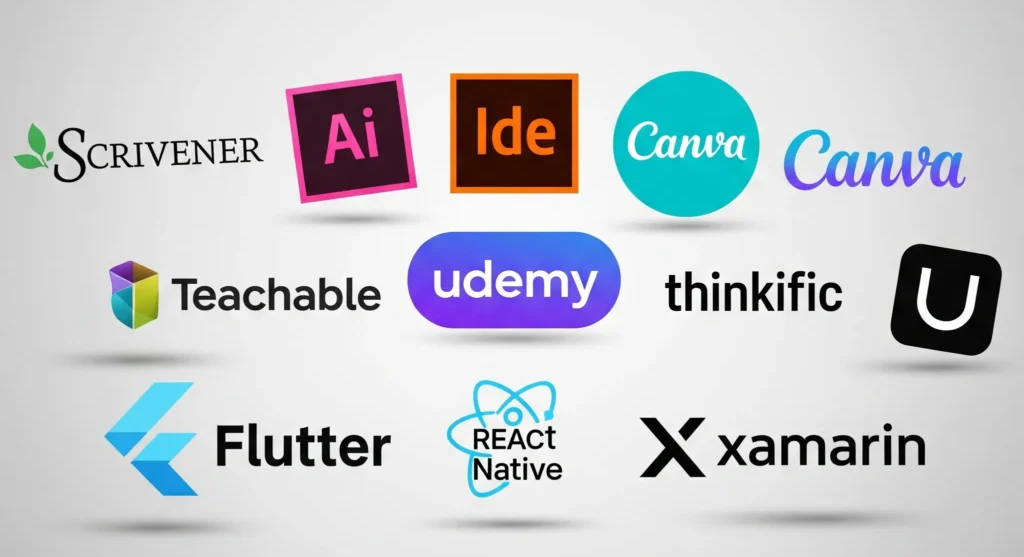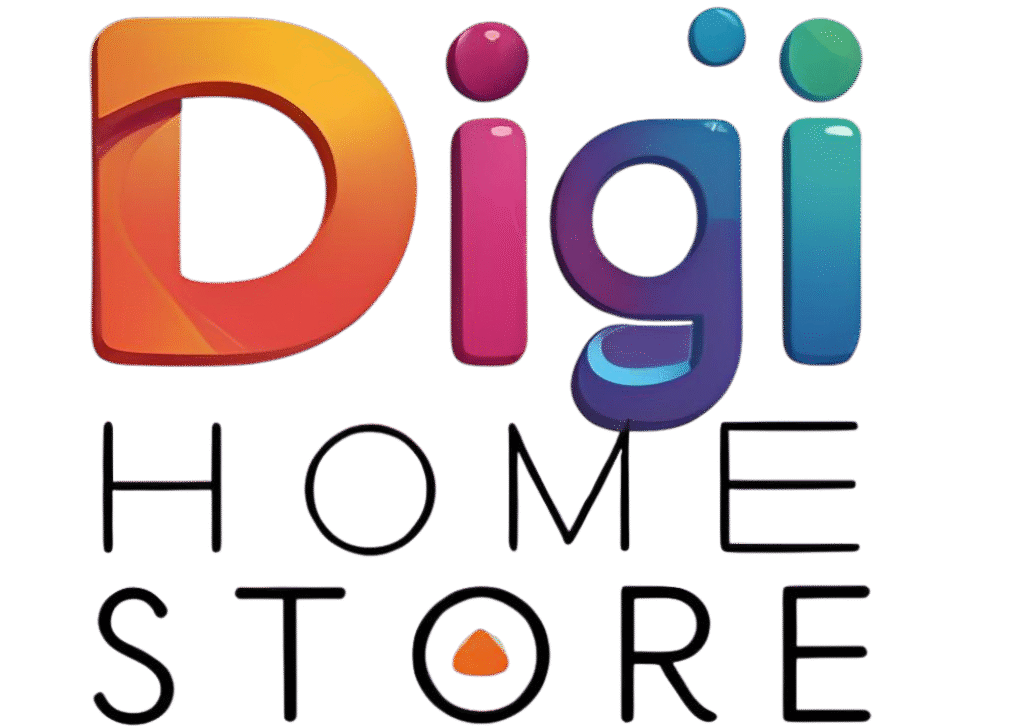In an ever-evolving digital landscape, the pursuit of profitable digital products has emerged as one of the most
exciting opportunities for entrepreneurs and creators alike. As we step into 2025, understanding the keys to
unlocking success in this dynamic realm is vital. This ultimate guide will reveal proven strategies to identify
market needs, harness innovative technologies, and create compelling offers that resonate with your audience.
From e-books and online courses to apps and subscription services, the potential for generating substantial
income is at your fingertips. Join us as we explore transformative insights and actionable steps to navigate the
thrilling world of digital entrepreneurship. Whether you’re a seasoned professional or just starting your
journey, this guide will equip you with the tools to thrive and build a profitable digital product that stands out
in the crowded marketplace. Are you ready to turn your ideas into success? Let’s dive in!
The Growing Market for Digital Products in
2025

As we advance into 2025, the digital product market continues to expand at an unprecedented rate. The rise of
remote work, e-learning, and the gig economy has fueled the demand for digital solutions that cater to a more
connected and tech-savvy audience. Entrepreneurs and creators are capitalizing on this trend, developing
innovative products that address a wide range of needs and preferences. From digital art and software to
comprehensive online courses, the possibilities are endless, and the market’s appetite for fresh, high-quality
content shows no signs of slowing down. This growth is further accelerated by increased internet penetration
and the proliferation of smart devices, making digital products more accessible to a global audience.
One of the primary drivers of this growth is the shift in consumer behavior. People are increasingly looking for
convenient, on-demand solutions that can be accessed from the comfort of their homes. This trend has given
rise to a plethora of digital products designed to enhance productivity, provide entertainment, and facilitate
learning. Moreover, the low overhead costs and scalability associated with digital products make them an
attractive business model for entrepreneurs looking to maximize their profits. As a result, the digital product
market is becoming more competitive, with creators constantly innovating to stay ahead of the curve and meet
the evolving needs of their audience.
Another significant factor contributing to the growth of the digital product market is the advancement of
technology. Innovations such as artificial intelligence, virtual reality, and blockchain are opening up new
possibilities for product development and distribution. These technologies are enabling creators to offer more
personalized and immersive experiences, further driving consumer interest and engagement. Additionally, the
rise of social media and influencer marketing has made it easier for digital product creators to reach their
target audience and build a loyal customer base. As we move further into 2025, the market for digital products
is poised to continue its upward trajectory, offering lucrative opportunities for those willing to adapt and
innovate.
Types of Profitable Digital Products
Digital products come in various forms, each with its unique advantages and potential for profitability. One of
the most popular types is e-books. E-books offer a straightforward way for authors and experts to share their
knowledge and insights with a wide audience. They require minimal upfront investment and can be distributed
globally through platforms like Amazon Kindle, Apple Books, and Google Play Books. The key to success with
e-books lies in identifying a niche topic that resonates with your target audience and providing valuable,
well-researched content that addresses their needs and interests.

Online courses are another highly profitable digital product. The e-learning industry has seen explosive growth
in recent years, driven by the increasing demand for flexible, accessible education. Platforms like Udemy,
Coursera, and Teachable have made it easier than ever for educators and experts to create and sell online
courses. To succeed in this space, it’s essential to develop a course that offers practical, actionable insights and
is presented in an engaging and interactive format. High-quality video production, clear instructional
materials, and regular updates are crucial components of a successful online course.
Mobile apps and software solutions represent another lucrative category of digital products. With millions of
apps available on platforms like the Apple App Store and Google Play Store, the competition is fierce, but the
potential rewards are significant. Successful apps typically solve a specific problem, offer a unique value
proposition, and provide a seamless user experience. Monetization strategies for apps can include in-app
purchases, subscription models, and ad revenue. Additionally, software as a service (SaaS) products, which
offer ongoing value through regular updates and support, have become increasingly popular among businesses
and consumers alike. To thrive in this space, focus on delivering consistent value, maintaining high-quality
standards, and staying responsive to user feedback.
Key Trends Shaping Digital Product Success

Several key trends are shaping the success of digital products in 2025. One of the most significant trends is the
rise of personalized experiences. Consumers today expect products and services tailored to their individual
preferences and needs. This trend is driven by advancements in artificial intelligence and machine learning,
which enable creators to analyze user data and deliver customized content and recommendations.
Personalization not only enhances the user experience but also increases engagement and loyalty, making it a
crucial factor for the success of digital products.
Another important trend is the growing emphasis on user experience (UX). As the digital product market
becomes more saturated, providing a seamless, intuitive, and enjoyable user experience is essential to stand out
from the competition. This involves paying close attention to design, usability, and accessibility. Creating a
user-friendly interface, ensuring fast load times, and offering responsive customer support are all critical
components of a positive UX. Additionally, incorporating user feedback and continuously improving your
product based on real-world usage can help you maintain a competitive edge.
Sustainability and ethical considerations are also becoming increasingly important for digital product creators.
Consumers are more conscious of the environmental and social impact of their purchases, and they expect
businesses to act responsibly. This trend is reflected in the growing popularity of digital products that promote
sustainability, such as educational content on environmental issues, apps that help users reduce their carbon
footprint, and platforms that support ethical consumption. By aligning your digital product with these values,
you can attract a more socially conscious audience and build a brand that stands for positive change.
How to Identify Your Niche for Digital Products

Identifying the right niche for your digital product is crucial for success. The first step is to conduct thorough
market research to understand the needs, preferences, and pain points of your target audience. This involves
analyzing market trends, studying competitors, and gathering feedback from potential customers. Tools like
Google Trends, social media analytics, and online surveys can provide valuable insights into what people are
searching for and what gaps exist in the market. By identifying a niche with high demand and low competition, you can position your product for success.
Once you have identified a potential niche, it’s important to validate your idea before investing significant time
and resources into development. This can be done through various methods, such as creating a minimum
viable product (MVP), conducting beta tests, or launching a crowdfunding campaign. These approaches allow
you to gather feedback from real users and gauge their interest in your product. If the response is positive, you
can proceed with confidence, knowing that there is a market for your digital product. If not, you can pivot your
idea or explore other niches until you find the right fit.
Another effective strategy for identifying your niche is to leverage your expertise and passion. Creating a digital
product in an area where you have deep knowledge and enthusiasm can give you a competitive advantage.
Your expertise will enable you to provide valuable insights and create high-quality content that resonates with
your audience. Moreover, your passion will keep you motivated and committed to the success of your product.
By combining your skills and interests with market demand, you can identify a niche that offers both personal
fulfillment and profitability.
Creating High-Quality Digital Products

Creating high-quality digital products is essential to stand out in the competitive market and build a loyal
customer base. The first step in this process is to focus on delivering value to your audience. This involves
understanding their needs, preferences, and pain points, and developing a product that addresses these
effectively. Whether it’s an e-book, an online course, or a mobile app, your product should provide practical,
actionable insights and solutions that make a meaningful difference in the lives of your users. High-quality
content, clear instructions, and user-friendly design are key components of a valuable digital product.
Investing in professional production is another important aspect of creating high-quality digital products. This
includes using high-resolution images and videos, clear audio recordings, and well-designed graphics and
animations. For e-books and online courses, consider hiring a professional editor to ensure your content is
polished and free of errors. For mobile apps and software, work with experienced developers to create a
seamless, bug-free user experience. While these investments may increase your upfront costs, they can
significantly enhance the perceived value of your product and justify a higher price point.
Continuous improvement is also crucial for maintaining the quality of your digital product. This involves
regularly updating your content, incorporating user feedback, and staying current with industry trends and
technological advancements. For example, if you’re offering an online course, consider adding new modules,
updating existing materials, and providing additional resources to keep your content relevant and engaging.
For apps and software, release regular updates to fix bugs, add new features, and improve performance. By
continuously enhancing your product, you can keep your audience engaged and ensure long-term success.
Effective Marketing Strategies for Digital Products

Marketing is a critical component of any successful digital product strategy. One of the most effective ways to
promote your digital product is through content marketing. Creating valuable, informative content that
addresses the needs and interests of your target audience can help you build trust and establish your expertise.
This can include blog posts, articles, videos, podcasts, and social media posts that provide insights, tips, and
solutions related to your niche. By consistently delivering high-quality content, you can attract and engage your
audience, driving traffic to your product and increasing conversions.
Another powerful marketing strategy is leveraging social media. Platforms like Facebook, Instagram, Twitter,
and LinkedIn offer numerous opportunities to connect with your audience, share your content, and promote
your digital product. Utilize these platforms to engage with your followers, answer their questions, and provide
updates on your product. Paid advertising on social media can also be highly effective, allowing you to target
specific demographics, interests, and behaviors. Running targeted ad campaigns can help you reach a larger
audience and drive more traffic to your product.
Email marketing remains one of the most effective ways to nurture leads and convert them into customers.
Building an email list allows you to communicate directly with your audience, providing personalized content
and offers. Start by creating a lead magnet, such as a free e-book, checklist, or webinar, to attract subscribers.
Once you have built your list, send regular newsletters with valuable content, product updates, and exclusive
promotions. Segmenting your list based on user behavior and preferences can help you deliver more relevant
and engaging emails, increasing your chances of converting leads into loyal customers.
Pricing Strategies to Maximize Profits

Pricing your digital product appropriately is crucial for maximizing profits and ensuring long-term success.
One effective pricing strategy is value-based pricing, which involves setting your price based on the perceived
value of your product to the customer. This requires a deep understanding of your target audience’s needs and
the unique benefits your product offers. By highlighting the value and outcomes your product provides, you
can justify a higher price point and attract customers who are willing to pay for premium quality.
Tiered pricing is another strategy that can help you maximize profits. This involves offering multiple pricing
options with varying levels of features and benefits. For example, you might offer a basic package with
essential features, a standard package with additional benefits, and a premium package with exclusive content
and support. Tiered pricing allows you to cater to different segments of your audience, from budget-conscious
customers to those looking for a premium experience. It also provides an opportunity to upsell and increase
your average transaction value.
Discounts and promotions can be effective tools for driving sales and attracting new customers. However, it’s
important to use them strategically to avoid devaluing your product. Limited-time offers, seasonal promotions,
and bundle deals can create a sense of urgency and encourage immediate purchases. Additionally, offering
discounts to loyal customers or providing referral incentives can help you build a strong customer base and
generate word-of-mouth marketing. By balancing discounts with the perceived value of your product, you can
boost sales without compromising your profit margins.
Tools and Resources for Digital Product Creation

Creating high-quality digital products requires the right tools and resources. For e-books, tools like Scrivener,
Adobe InDesign, and Canva can help you write, design, and format your content professionally. These tools
offer a range of templates, design elements, and customization options to create visually appealing and
well-structured e-books. Additionally, platforms like Amazon Kindle Direct Publishing and Apple Books allow
you to easily publish and distribute your e-books to a global audience.
When it comes to online courses, platforms like Teachable, Udemy, and Thinkific provide comprehensive
solutions for course creation, hosting, and marketing. These platforms offer user-friendly interfaces, course
templates, and integrated payment systems to streamline the process of creating and selling online courses. For
video production, tools like Camtasia, ScreenFlow, and Adobe Premiere Pro can help you create high-quality
instructional videos, while platforms like Vimeo and YouTube provide hosting and distribution options.
For mobile apps and software, development tools like Flutter, React Native, and Xamarin enable you to build
cross-platform applications efficiently. These tools offer a range of pre-built components, libraries, and
frameworks to accelerate the development process and ensure a consistent user experience across different
devices. Additionally, project management tools like Trello, Asana, and Jira can help you organize your
development workflow, track progress, and collaborate with your team effectively. By leveraging these tools
and resources, you can streamline the creation process and ensure the quality of your digital products.
Conclusion and Future Outlook for Digital Products

As we look to the future, the potential for digital products remains immense. The ongoing advancements in
technology, coupled with the increasing demand for convenient, on-demand solutions, will continue to drive
the growth of this market. Entrepreneurs and creators who can adapt to changing trends, leverage innovative
technologies, and deliver high-quality, valuable products will be well-positioned for success. The key to thriving
in this dynamic landscape lies in understanding your audience, continuously improving your product, and
staying ahead of the competition.
The future of digital products also holds exciting possibilities for new and emerging technologies. Artificial
intelligence, virtual reality, and blockchain are just a few of the innovations that are set to transform the way
digital products are created, distributed, and consumed. These technologies offer new opportunities for
personalization, interactivity, and security, enhancing the overall user experience and creating new avenues
for monetization. By staying informed about these trends and incorporating them into your product strategy,
you can stay at the forefront of the digital product market.
Ultimately, the success of your digital product in 2025 and beyond will depend on your ability to deliver value,
engage your audience, and adapt to the ever-changing digital landscape. Whether you’re a seasoned
entrepreneur or just starting your journey, this ultimate guide has provided you with the insights and strategies
needed to navigate the world of digital entrepreneurship. By following these principles and continuously
striving for excellence, you can unlock the full potential of your digital product and achieve lasting success in
the competitive marketplace.


